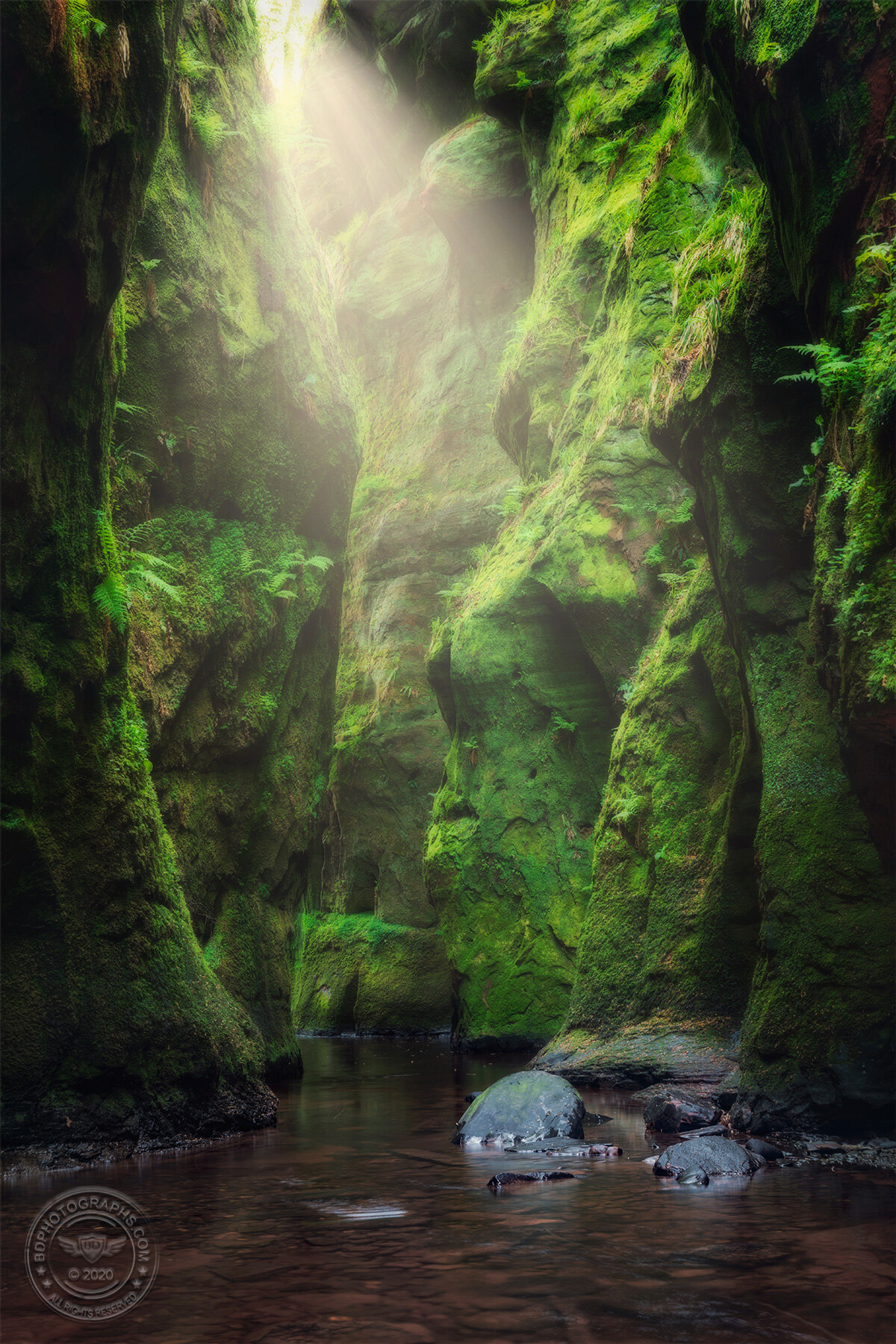Mid-spring is one of my favorite times of year to capture waterfall images, bested only by peak foliage in autumn. In the northeastern US, it’s roughly in mid-May, several weeks after flowering trees have blossomed and shed their petals sprouting new leaves for the season. The foliage is almost fluorescent, a shade of chartreuse that slowly morphs into lime green.
It’s might be difficult to believe, but these two images are of the same waterfall, about 7 months apart. The first image was shot in late October, after the driest autumn, and driest month on record in New Jersey and eastern Pennsylvania. With no measurable precipitation whatsoever, this was a highly unusual stretch of drought in the Northeast. Water flow reduced to a trickle and the normally resplendent fall foliage was at best a palette of muted earth tones. I was able to wade deep into the collecting pool, water barely dripping over top of my wellies. (And though it was not a good season for foliage, the clear dry weather did provide some surprising photo opportunities.)
Fast forward to May and weeks of regular precipitation pummeling the reservoirs. Unseasonably cool weather kept my house slippers out much later in the season (usually they’re packed away by late April — what can I say, my feet get cold at home). With Memorial Day just around the corner, summer couldn’t feel further away from the dreary bone-chilling wetness more reminiscent of the Scottish highlands or the Pacific Northwest than the climate in New York City.
But as landscape photographers know, weather means opportunity, and my visit to the Poconos did not disappoint. The record-high water flow, audible from the trailheads, thundered through the forest and blasted the surrounding berm with powerful mist. The canopy filled in with dense new growth and the low lying ferns sprawled without restraint. Spring was truly a time of abundance.
The two images for comparison… the scenes are were shot from a different vantage point, notice the same split trunk in both images.
As usual, I shot both of these images with my full-frame Canon R5 and wide to medium lenses. I always use a circular polarizer when photographing waterfalls — the difference in image quality when using this accessory is remarkable.
I highly recommend revisiting your favorite locations in different conditions. Weather, light quality, and seasons all contribute significantly to the scene and allow you to create completely new and different images. You can bet I’ll be back in my chosen spots for many seasons to come…





































